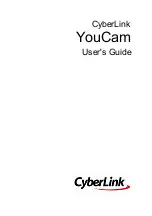
Processing the Radiosity Solution
15
❚❘❘
Processing the Radiosity
Solution
During the Solution stage, Lightscape uses radiosity
to accurately calculate how light propagates in the
model.
When you initiate the radiosity process, Lightscape
reduces the model to a set of surfaces that are opti-
mized for this process. Once the model is initiated,
you can no longer manipulate the geometry or add
luminaires.
During the Solution stage, you run the radiosity
process, refine the solution, and resume radiosity
processing to obtain the final results. You can then
output the results as an animation or as individual
images, analyze the lighting results, and export the
solution to other programs.
Setting Processing Parameters
Use process parameters to control the quality of the
radiosity solution. Setting the process parameters is
a balancing act. Finer settings produce better quality
images, but they also require more processing time
and memory.
To improve the efficiency of the solution, you can
adjust global processing parameters, which apply to
the entire model, and local processing parameters,
which apply to specific surfaces.
For more information, see Chapter 11, “Radiosity
Processing.”
Radiosity Processing
To process the radiosity solution, Lightscape calcu-
lates the diffuse light energy distribution in the
model, both direct and indirect. You can interrupt
the processing of the radiosity solution at any time to
alter or fine-tune the model’s appearance.
How radiosity works is described in detail in
Chapter 1, “Introduction.”
Refining the Solution
In the Solution stage, you cannot change the model
geometry, but you can change the characteristics of
a material and the photometric properties of a lumi-
naire. Once you make your changes, you can update
the results of the radiosity solution by either
continuing the processing from where you left off or
by restarting the processing from the beginning.
You save the results of the radiosity solution in a
Lightscape Solution (.ls) file.
Outputting your Work
During the output stage, you can render a Light-
scape radiosity solution very quickly using
OpenGL® rendering or more accurately using the
Lightscape ray tracer. Ray tracing adds specular
reflections and transparency effects to the final
images. You can also use the ray tracer to create
higher quality shadows in the entire model or for
specific light sources. For more information, see
Chapter 11, “Radiosity Processing,” and Chapter 14,
“Rendering.”
The options you choose determine the image quality
and the time it takes to generate an image. The
choice you make depends on your intended use. The
following uses are the most common:
•
Single images
•
Walk-through animations
•
Virtual reality
•
Lighting analysis.
Single Images
You can produce high-quality images of any resolu-
tion. You can quickly output the image from a
Summary of Contents for LIGHTSCAPE
Page 1: ...SULO 4 31 93 36034333308355 LJKWVFDSH...
Page 18: ...NOTES 10...
Page 110: ...NOTES 102...
Page 136: ...NOTES 128...
Page 166: ...NOTES 158...
Page 176: ...NOTES 168...
Page 202: ...NOTES 194...
Page 210: ...NOTES 202...
Page 248: ...NOTES 240...
Page 294: ...NOTES 286...
Page 308: ...NOTES 300...
Page 316: ...NOTES 308...
Page 324: ...NOTES 316...
Page 342: ...Glossary 334 Lightscape...
Page 360: ...Index ix 352 Lightscape...
Page 362: ......
















































